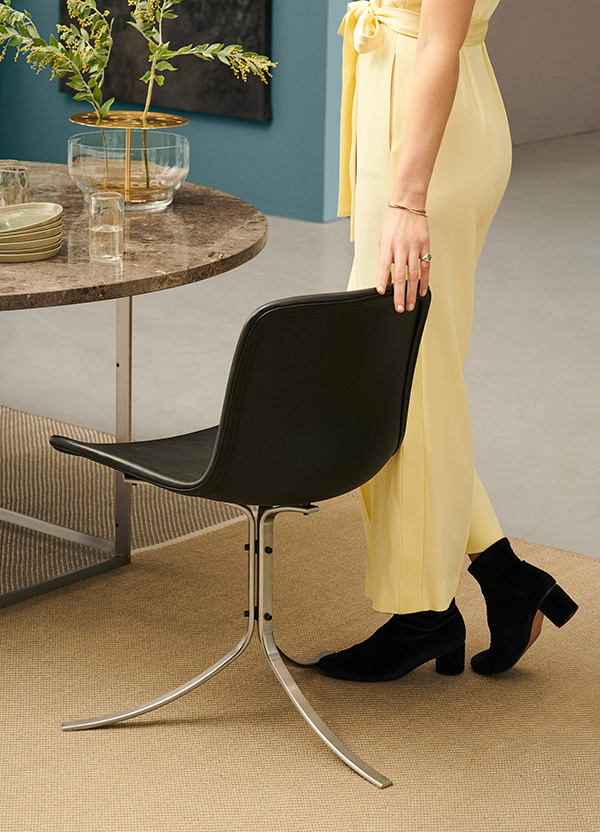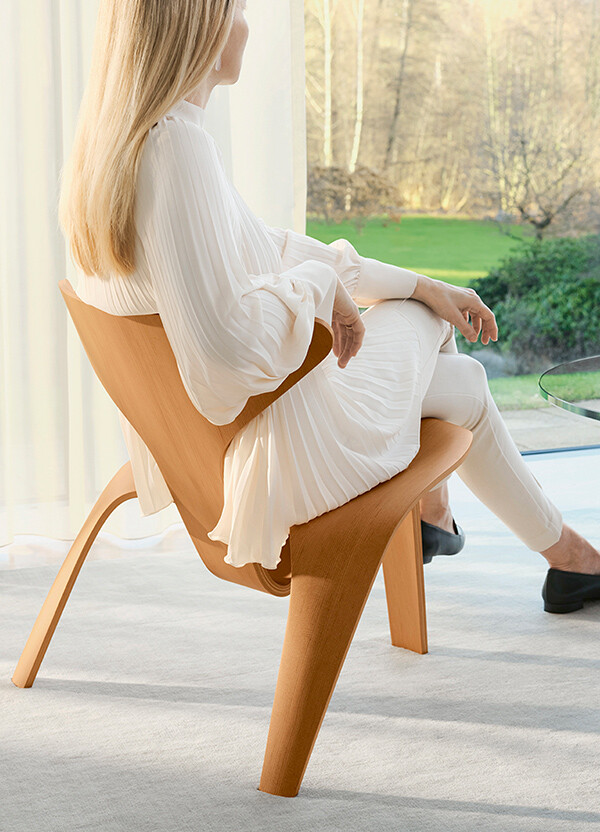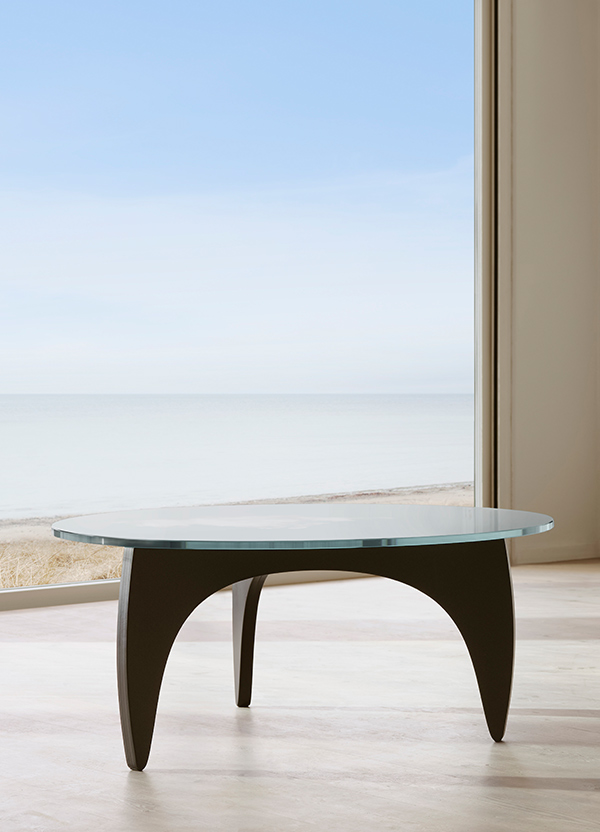Designers at Nest: Poul Kjærholm
A rebellious man of steel and a prize pupil of Hans Wegner – join us to discover more about the life and work of Danish designer Poul Kjærholm.
Scandinavian aesthetics have dominated the design scene in the 20th century with names such as Arne Jacobsen and Finn Juhl becoming renowned for their sculptural use of wood. But there was one quietly revered designer who went against the grain of mid-century Danish design. Today, we shine a light on heavy metal carpenter Poul Kjærholm.
The birth of a movement
As one of the central figures of the Danish Modern movement Poul Kjærholm was the brain behind many iconic pieces of Scandinavian design.
Although its roots are in the Bauhaus movement of the 1920s, spearheaded by visionary Kaare Klint, the Danish Modern movement found its stride in the years after the Second World War. The growth of a middle class across Scandinavia and a shortage of raw materials combined to produce a unique focus on functional and elegant furniture, with an eye towards mass production and affordability.
The scarcity of solid wood led to designers exploring the properties of other materials – setting the stage for a generation of revolutionaries who used modern materials in innovative new ways. This was epitomised by designs such as Arne Jacobsen’s Ant Chair, created using steam-bent plywood and Verner Panton’s unforgettable moulded plastic chair.
“Well, then goodbye Mr. Kjærholm.”
Born in 1929, Kjærholm was perfectly placed to take advantage of this design renaissance. Apprenticing as a cabinet maker with master craftsman Thorvald Gronbech in 1948, he went on to attend the Danish School of Arts and Crafts in Copenhagen. It was while studying that he met the man behind the CH24 Wishbone Chair, Hans Wegner and began developing his already considerable talents as a designer.
At just 22 years of age, Kjærholm designed the Element chair (now part of Fritz Hansen’s range as the PK25) as his graduation project, which caught the eye of Fritz Hansen’s then co-director Soren Hansen, who recognised his enormous potential and invited him to join the company. His steely determination and exceptional talents had earned him a place at one of Denmark’s most storied furniture manufacturers.
Unfortunately, Kjærholm didn’t last long at Fritz Hansen. With the company’s attention focussed on Arne Jacobsen’s Ant Chair, pitting both designers against each other, Kjærholm was frustrated by the lack of progress on his designs. The tempestuous designer stormed into Soren Hansen’s office, demanding that the company stop working on the Jacobsen chair, or he’d leave. “Well, then goodbye Mr. Kjærholm,” was Hansen’s droll reply.
New opportunities
It wasn’t long however before Kjærholm’s talent was given an opportunity to shine. A partnership with cabinetmaker Ejvind Kold Christensen soon launched him onto the international stage. Christensen was seeking a new designer to help his company move away from cabinet production and approached Hans Wegner for a recommendation. As Kjærholm was his best student, Wegner didn’t hesitate in putting him forward, beginning a relationship that would last until Kjærholm’s death in 1980.
Despite the circumstances of Kjærholm’s departure from the brand, Fritz Hansen maintains a great admiration for his work, and acquired his whole collection with the blessing of his family, obtaining the rights to reproduce his designs in 1982.
A man of steel
What set Poul Kjærholm apart from his fellow designers was his love of steel as a material. Once quoted as saying: “Steel’s constructive potential is not the only thing that interests me; the refraction of light on its surface is an important part of my artistic work. I consider steel a material with the same artistic merit as wood and leather,” he pushed the material to its limits, creating a huge variety of sculptural pieces like the PK9 dining chair or the PK24 lounge chair.
His influences were drawn from the world of architecture, design, and sculpture. Kjærholm was often referred to as a “furniture architect,” exploring the profound relationship between the human form, materials, and space. The effortless strength of steel, combined with sculptural curves gives his pieces a surprising delicacy, making each one a work of modern art.
Making design history
Two years after Kjærholm’s death, Fritz Hansen acquired the rights to produce his iconic furniture designs. Founded in 1872, the Danish manufacturer produces a huge range of iconic designs, from a variety of modern design legends. Kjærholm’s body of work represents a key part of their collection, a testament to the talent he demonstrated during his tenure as a designer at the company.
One of the earliest pieces he developed for Fritz Hansen was the PK0 A chair, and the PK60 table. Developed in 1952, these pieces featured a futuristic silhouette and a mould-breaking plywood frame, the PK0 A is a revolutionary piece of furniture, defining an era of design with its curvilinear shape.
The influence of modernist sculptors like Henry Moore and Isamu Noguchi can be seen in the flowing lines of both chair and table, expertly blended with Kjærholm’s architectural sensibilities to produce iconic pieces of furniture. Kjærholm’s use of a glass top in the PK60 draws parallels with Noguchi’s iconic table, where the glass top highlights the sculptural forms of the base, the undulating curves reinterpreting the coffee table’s traditional form.
To celebrate the 150th anniversary of Fritz Hansen, the firm is re-releasing both the PK0 A and the PK60. This represents a perfect opportunity to add a piece of Danish design history to your home, transforming your living spaces with the graceful curves of Kjærholm’s finest work.
Nest are delighted to be one of a few select dealers who are licensed to sell Poul Kjærholm’s designs. Discover more of Poul Kjærholm’s designs on our designer page or shop from the selection below.
Do you own a design by Poul Kjærholm? Show us your design icons over Instagram @nest_co_uk.












